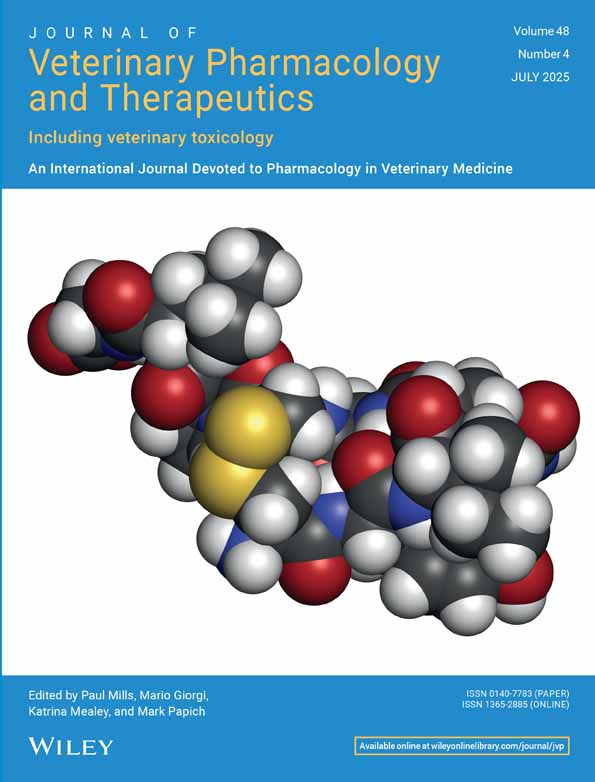The effect of experimental fascioliasis on the pharmacokinetics of antipyrine and sulphadimidine in desert sheep
Abstract
Healthy adult male desert sheep were experimentally infected with Fasciola gigantica, to investigate the influence of experimental fasciolasis on the pharmacokinetics of antipyrine and sulphadimidine. Each animal received 500 metacercariae orally. The experimental infection was confirmed histologically, by detection of Fasciola eggs in faeces and by measuring the activities of the enzymes sorbitol dehydrogenase (SD), glutamate dehydrogenase (GD) and aspartate aminotransferase (AST) in plasma during the course of the disease. Changes in the pharmacokinetics of antipyrine and sulphadimidine were reported in the experimentally infected animals. Significant prolongation of antipyrine half life was observed 16 weeks after infection. The half-life of sulphadimidine was also significantly prolonged 5, 9 and 16 weeks after infection. Clearance of the sulphonamide was decreased significantly 5 and 9 weeks after infection and it regained its pre-infection value 16 weeks after infection.




